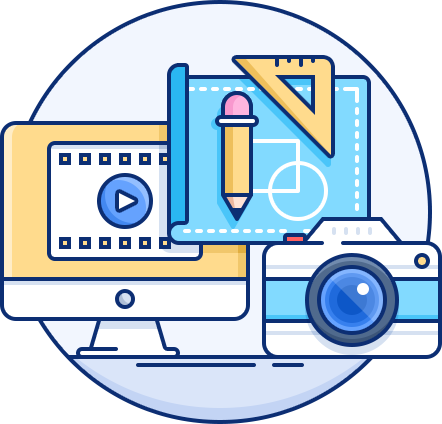Find Freelance Designers for FREE
Hubstaff talent is a 100% free resource for companies looking to find remote freelancers across the globe. No fee, no markups, no middlemen.
Find your next great freelancer, without the fees.
Why we are freeTop Skills in Design & Multimedia (10)
All Skills in Design & Multimedia (184)
- Graphic Design
- Photoshop
- Video Production & Editing
- Logo Design
- Photo Editing
- Web Design
- Canva
- Illustrator
- Brochure & Flyer Design
- Responsive Web Design
- UI/UX Design
- Banner Design
- Presentation Design
- Photography
- PSD Conversion
- Business Card Design
- Poster Design
- Adobe Creative Cloud
- Design
- AutoCAD
- UI Design
- Illustration
- Youtube
- Audio, Music Production & Editing
- Infographics
- InDesign
- Motion Graphics
- Voiceover
- After Effects
- Image Processing and Editing
- Vector Illustration
- Drawing
- 3D Design
- T-Shirt Design
- Figma
- Print Design
- Premiere
- 3D Modeling
- Layout Design
- UX Design
- 2D Animation
- Animation
- Visual Design
- CorelDRAW
- Sketch
- 3D Animation
- Lightroom
- Digital Art
- Book Design
- Mobile Design
- Package Design
- App Design
- Wireframing
- Typography
- Adobe XD
- SketchUp
- Multimedia
- 3D rendering
- Icon Design
- Painting
- Art
- Interior Design
- 2D Design
- Ads Design
- Elementor
- Invitation Design
- Magazine Design
- Fashion Design
- User Centered Design
- Template Design
- Stationery Design
- Character Design
- Dashboard Design
- Color Correction
- Cartoon Design
- Digital Design
- SolidWorks
- Film
- Song Writing
- Final Cut
- 3ds Max
- Sound Production and Editing
- Revit
- Podcast
- Architecture
- CAD
- Art Director
- Retouch
- Concept Art
- Singing
- Survey Management
- Interface Design
- Webflow
- Blender
- Drafting
- Storyboard
- Cinematography
- iOS Design
- Filmora
- Electrical Design
- Desktop Publishing
- Whiteboard animation
- Interaction Design
- GIF
- Autodesk
- Instructional Design
- InVision
- Album Design
- Visio
- ArcGIS
- User Flow
- Lumion
- DaVinci Resolve
- Visual Effects
- Composition
- Electronics Design
- Font Design
- Audition
- Lettering
- Interactive Design
- Anime Art Design
- Television Production
- Vimeo
- GIMP
- Watercolor
- GIS
- Camtasia
- Comics
- Maya
- Industrial Design
- Detail Design
- Cinema 4D
- Sony Vegas
- Rendering
- Label Design
- Postcard Design
- QGIS
- Pitch Deck Design
- CATIA
- Logic
- Object Oriented Design
- V-ray
- Pro Tools
- Avid
- Mockup
- Balsamiq
- Texturing
- SVG
- Inkscape
- ANSYS
- Caricature
- ZBrush
- Marvel
- Accessibility
- Procreate
- Ableton Live
- Urban Design
- Zeplin
- Clip Studio Paint
- OCR
- Audacity
- Fireworks
- ArchiCAD
- Rhinoceros
- Cartography
- Creo
- SOLID
- MVVM
- WPBakery
- STAAD
- Paint Tool SAI
- Corona Renderer
- Broadcast Design
- KeyShot
- PostGIS
- iMovie
- Cubase
- QuarkXPress
- Capture One
- Proteus
- NX
- Sibelius
- Principle
- Flinto

Hubstaff has helped me find talented content writers that I can work with on my own terms. As I need more remote freelancers it will be the first place I look.


About Design and Multimedia
Good design is something that is becoming an increasingly important aspect of products and business. In our modern world, where people spend on average over 2 hours and 50 minutes a day online, the role design and multimedia play in ensuring a business’ success is fundamental and almost unmatched, and high-quality multimedia (like animations or infographics) can help to transform a business’ fortunes.
As our online consumption habits have shifted from being desktop first, to being dominated by a variety of mobile devices, companies have had to ensure that all visitors and customers receive the same outstanding experience every time. This has been achieved most successfully through good design. Companies like Apple, YouTube, and BuzzFeed, have shown how having well designed products and carefully crafted multimedia strategies that incorporate video, illustration, and photography, can translate into huge market share and significant revenues.
The power of design and multimedia is that it can enable your business to grow, improve, and dominate, without you having to increase spending by creating new products, and without you having to enter new markets. Design and multimedia have the ability to increase revenue, improve accessibility, boost engagement, and increase brand perception and brand value.
Hiring a remote designer or multimedia specialist, whether it be a UX designer to help you improve your product’s layout and user flow, or an illustrator to create eye-catching infographics or advertisements, can help you to dramatically improve your business’ performance and help you to increase profits without having to make any business changes.
Hiring a remote designer or multimedia specialist also offers you the ability to make fundamental savings, when compared to hiring someone in-house. Remote workers can be hired as contractors; they don’t need physical desk space in your office, don’t need employer contributed health insurance, and don’t require in-office benefits (like coffee and snacks). Making savings here can help you to have more money available for business and product development that can help your company to grow.
What’s more, hiring remote designers and multimedia creatives, rather than in-house employees, means that you are able to access a vast talent pool that includes the best the world has to offer. Instead of being limited to hiring people from within your town or city, you have the ability to hire the best people from anywhere in the world. This means that you never have to compromise on experience and expertise.
Design & Multimedia FAQ
- How do you choose/hire a good remote designer or multimedia specialist?
When deciding which candidate to hire, there are several key indicators which should be looked out for the ability to work independently and autonomously, a strong sense of motivation, and a desire to learn and improve. Alongside these character traits, look for consistency in aesthetic, in quality, and in style. A good designer is someone who is able to consistently execute great designs, that match a brief, and solve customer experience problems.
Beyond this, look for relevant experience in your company’s sector, and for evidence that they are able to work well in organizations of your size. Alongside these more process oriented investigations, ask yourself whether your design candidate has a style that is right for your business, and whether the work they have done previously is still being used by companies today.
- Which type of designer or multimedia specialist is right for my company?
Choosing between the variety of different types of designers (from UX designers, to web designers, graphic designers, or illustrators) or multimedia specialists (from animators, to illustrators, photographers, or video editors) can seem like a difficult decision, especially if you do not come from a design or multimedia background.
To make this process easier, place your focus on what your company needs urgently. If you have found that your mobile app leaves customers frustrated, hiring a UX designer will help you to remedy the situation; or if you need to create a series of infographics to email to subscribers, hiring a graphic designer or illustrator will help you to get things in order. Targeting employees to solve specific problems is the best way to maximise results.
If you find that your organization needs design or multimedia help in multiple areas, but that your budget doesn’t allow for more than one remote hire, aim to recruit a strong generalist who is comfortable working on a variety of projects. Do bear in mind that strong generalists typically command higher salaries.
- How do I manage a remote designer or multimedia creative?
Clear communication is integral to ensuring that your managing of your remote designer or multimedia creative is a success. Conveying projects in the clearest possible terms, outlining exactly what is expected (while allowing the flexibility for them to introduce their own unique style), and setting clear, but achievable, deadlines, is the best way to guarantee success.
If you are hesitant about allowing your remote designer to take complete control over projects, consider using remote time tracking tools like Hubstaff, that allow you to closely monitor a remote employee’s productivity without intruding on them.
- How do I interview design and multimedia candidates?
Because design is subjective, you may feel more hesitant about interviewing a remote designer or multimedia specialist than you would any other hire (especially if you do not come from a design background). However, all great creatives are far more than their work; so during the interview process, attempt to gain an understanding of their work patterns, how they make creative decisions, whether they are empathetic and able to approach problems from a customer’s perspective, and whether they are passionate about their craft.
If you don’t have a background in design or multimedia, so cannot focus on specifics, ask your candidate to walk you through the process they underwent for one of their portfolio pieces. During this time, ask about the brief, what their considerations were, and why they made certain decisions. Attempt to gain an understanding of their thought process, and how they marry design, creativity, and strategy.
For a set of questions to ask designers during the interview process, click here
- What should I look for when hiring a remote designer?
Like in-house designers, remote designer and multimedia specialists need to have the ability to be independent, work autonomously, be analytical, and be questioning; but above this, they need to be able to be empathetic. Without empathy, your worker will be unable to design for people other than themselves - and that means that your clients, customers, and users will suffer.
A good indicator of a talented and employable designer or multimedia specialist, is someone who has made their work a big part of their life. If your candidate has worked on multiple personal, or side, projects (even if they have been unsuccessful), they are likely to have the motivation to fully undertake your work each day and will have gained the necessary experience to make your projects a success.
To gain more of an understanding of what makes a great designer, click here



